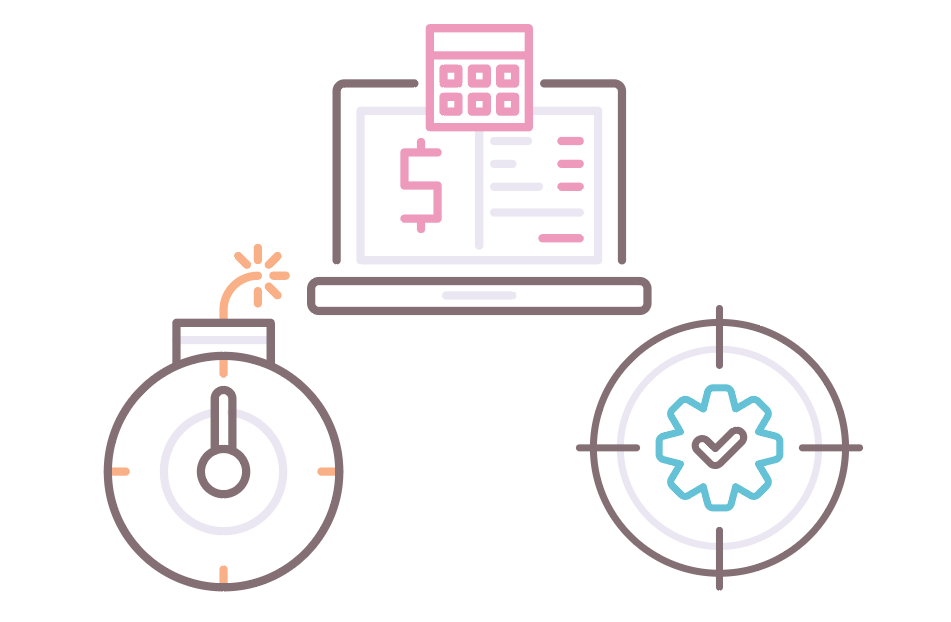Managing Projects Successfully
Andy Bell | November 16th, 2020

A challenge that Project Managers often face is that not every project can be managed in the same way. Projects come in different sizes and complexities with different budgets and scope requirements. At AWH, we work on a variety of projects, each one a different size. Everything from a small, three-week, two-team member concept development engagement to large application development efforts that require a large development team and many months of work to go from an idea to a finished product. The goal is to maintain company practices as much as possible but by applying the right level of effort and oversite to a project. For very small engagements, the management of the project should not overrun the value of the work being performed.
The Three Pillars
A Project Manager can’t decide on what tools to use or how to manage a project until they’ve reviewed the three pillars of management. The three pillars that every project includes are - scope (of work), budget and timeline. A Project Manager must balance the relationship of these three pillars at every step along the way to relay appropriate information to the project stakeholders and to keep the technical team productive and efficient.
Let’s compare two different software related projects. The first project will be a large-scale project with a full development team and multiple phases and the second project will be a small start-up engagement.
Full Development Effort
For the large project, the client usually has a vision of what they want their product to be and have already secured the funding to make that vision into a reality. At AWH, we will help the client through multiple phases of the project which include:
- Validation of the concept
- Design of the application technology stack and User Experience (UX)
- Development of the product
- Production
- Support
In this case, we choose robust project management tools to manage the project. At AWH, we use Atlassian tools and JIRA to run projects in an Agile scrum framework. Projects include standard Scrum framework ceremonies such as:
- Daily stand-ups
- Biweekly sprint planning
- 2-week development sprints
- Sprint retrospectives
These scrum ceremonies are needed to coordinate the team’s efforts, track progress and ensure that the product is meeting client expectations.
Most large projects also include a detailed roadmap for feature development and risk management templates to identify and mitigate the risks associated with a project. In addition to the internal project management, the Project Manager will have regular meetings with the client for weekly status updates of budget burn, progress through each phase, and discovery meetings to define requirements for upcoming tasks.
These tasks are important to the successful execution of a large, complex project. For smaller projects however, the client may not have the budget to support the full project management framework. When we look at a smaller engagement it doesn’t always make sense to apply all the same tools and processes.
A Phased Approach
For a smaller software project, the engagement may only cover one phase and have a limited number of team members engaged. An example might be an early start-up concept phase to define a basic set of feature flows and develop client personas. In this case, team composition may only be a designer and the Project Manager. The tasks to be done can be clearly defined at the start of the project.

The first step should be working with the client and designer to define exactly how a project will be managed. A project charter document is formed at the beginning of a project can help both the client and the management team understand the expectations and constraints of how the engagement will be managed. There are several options for efficiently managing smaller projects without compromising the quality of the engagement. For smaller projects, a simple Kanban board with the tasks at hand may be sufficient. If the project only involves a single phase, the Kanban board may replace the need for a detailed roadmap. Risks may be identified and tracked as part of the status report.
Some of the options for smaller projects include:
- Using a simple Kanban board to track tasks assigned to the team
- Combining meetings to cover new task definition and task progress
- Eliminate daily stand ups
- Use strong agenda for client meetings to cover more than just status

Plan for Success
It’s up to the Project Manager to decide on what is critical for the success of a project and what tools are necessary. They must determine what’s critical to convey to the client and stakeholders while still managing the time allotted to each stage in the project. Standard processes should be examined to see which are not vital to the completion of the project and can be eliminated without compromising the quality of the delivered project.
In the end, the Project Manager needs to understand the purpose of each process used to manage projects for their organization. With understanding of what each project management tool is for, the PM can evaluate the most efficient way to apply those tools to a variety of project sizes and types to ensure a successful engagement for all parties involved.
